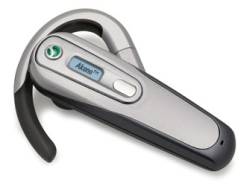 Yet another Bluetooth headset. I sure hope that this one sticks with me for a while.
Yet another Bluetooth headset. I sure hope that this one sticks with me for a while.
The main feature that sold me the Sony HBH-660 was the caller info.
The headset has a tiny 6 character LCD display. Besides showing battery status, volume level and other good information it also display a caller’s number or name if you have the number stored in your phone as a contact.
The headset comes with a strap so that you can wear it around your neck. Much better than loosing it in a pocket somewhere. While wearing the unit around your neck, the caller info is really handy.
The battery life has improved slightly from my previous HBH-60. This could also be just a perception due to the new battery indicator.
The HBH-660 is tiny bit heavier than the HBH-60 and HBH-600 but it did not result in any discomfort.
On a downside, my HBH-660 has worse voice quality than my old HBH-60 and HBH-30. This could be due a faulty device but I recommend you to try it out before purchase!
Tag: ericsson
Hello J2ME World
With my recent upgrade to SonyEricsson T630, a new geek opportunity presented it self: to develop Java applications for my very own mobile. Priceless.
Because I am fairly familiar with Java and the fantastic, open source, IDE NetBeans it was easy to develop and deploy my first HelloJ2MEWorld application.
NetBeans has an extension module focused on J2ME development. Download it and NetBeans will be able to help you with your Midlets, JARs and obfuscation.
NetBeans is using the Sun J2ME SDK. If you want to be more device specific, I’d recommend you to download an SDK directly from the mobile maker you are interested in. Two obvious choices are SonyEricsson and Nokia.
Try out and debug your application on one of the supplied emulators.
The last step is to transfer your application to your mobile. You have a choice between infrared, bluetooth, USB cable and Over-the-air (OTA). Since I am developing on a IR enabled laptop, ir was the best option for me.
First application that came to mind for developing was of course a mobile blogging tool. A quick search on Google returned the just started open source project MIDLog. So instead of starting from scratch and probably duplicating all work done in MIDLog, I am hoping to contribute to MIDLog.
The J2ME world is crowded with two main MIDP versions, WTK versions and various JSRs (Java Specification Requests). While many exciting features are planned for future version of J2ME, todays devices are very limited.
Example, the T630 supports the “new” multimedia API (MMAPI – JSR 135) but Sony has chosen to support the sound part only. This means that there is no support for image capturing and I suspect this will make it very difficult to develop a mobile blog tool capable of posting images.
